We're about to plunge into the world of fermentation – a world where centuries-old practices meet new-age health wisdom. If you're a home cook or a health enthusiast looking to invigorate your culinary adventures with probiotic goodness, then this post is for you. Lacto-fermented vegetable medleys are not just a deliciously tangy addition to your meals; they're also chock-full of health benefits and provide a fascinating insight into the art and science of fermentation. Gather round, paleo foodies and fermenting novices, as we explore the magic of fermenting your very own vegetable medleys.
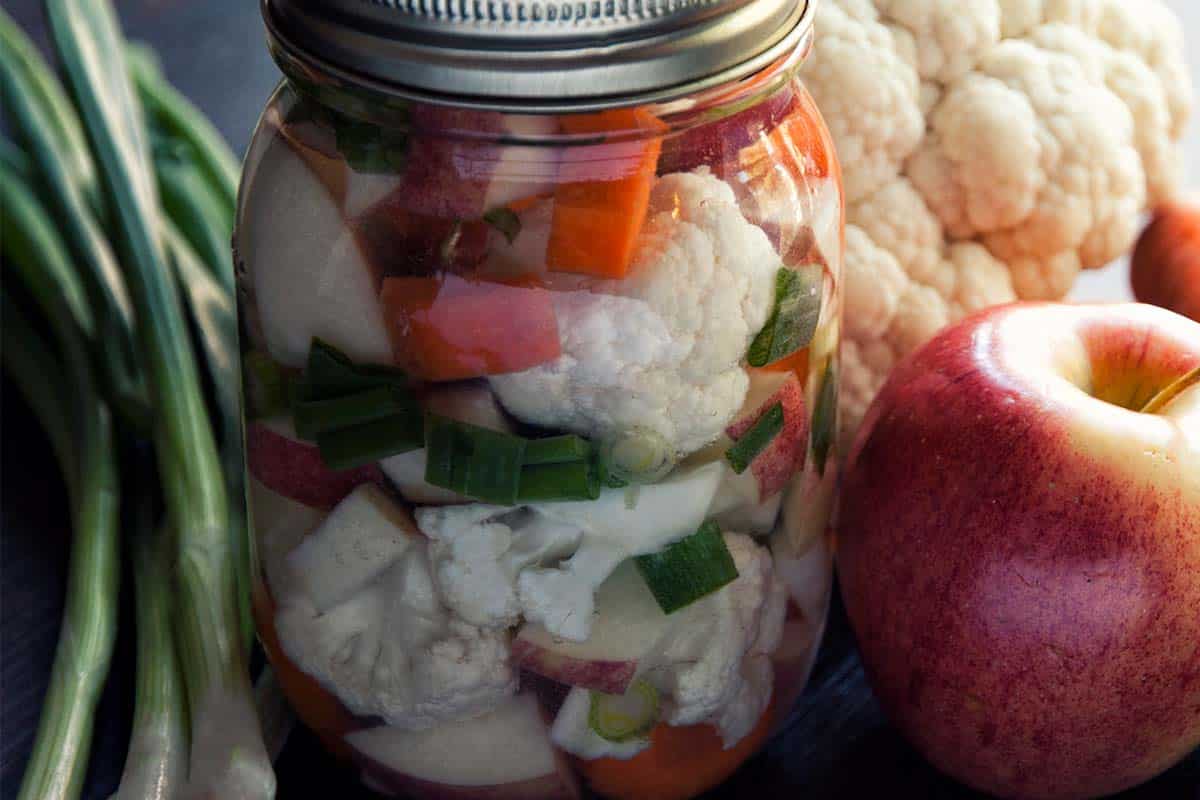
Jump to:
Lacto-Fermented Vegetable Medley
Fermentation is an ancient culinary practice that dates back thousands of years. Our ancestors, long before the advent of refrigeration or canning, found ways to preserve food through fermentation. In the process, they discovered that fermented foods were not only longer-lasting but also possessed unique flavors and health benefits.
The "lacto" in lacto-fermentation comes from lactic acid – the key player in this type of fermentation. Naturally occurring bacteria – lactic acid bacteria – convert sugars into lactic acid, preserving the food and promoting the growth of beneficial microorganisms. This not only gives fermented foods their distinctive sour taste but also enhances their nutritional profile by increasing vitamin levels and making nutrients more bioavailable.
Lacto-fermented vegetable medleys, popularly known as "sauerkraut" or "kimchi," are a staple of many traditional diets and are making a resurgence in modern, health-conscious kitchens due to their gut-friendly nature. They are alkalizing, help with digestion, and support a healthy gut flora, which is linked to improved mental health and a stronger immune system.
Want to know what I would serve with this awesome pickled vegetable medley? Easy. I'd go with Lemon and Garlic Butter Fish for a burst of flavor or as a vibrant topping on an All-American Burger to enhance the overall dining experience.
Ingredients
Serves: 64 Prep Time: 30 minutes Ferment Time: 3-5 days
- 4 apples, cored and diced
- 4 cups cauliflower florets
- 4 carrots, peeled and diced
- 8 green onions, thinly sliced
- 3 tablespoon fresh ginger, grated
- 8 tablespoon sea salt
How to Make Lacto-Fermented Vegetable Medley
Combine the apples, cauliflower, carrots, onions and ginger together.
Place the mixture little by little in your fermentation jar, pounding them vigorously and sprinkling some of the sea salt as you go along.
Make sure the mixture fills the jar up to 1 inch bellow the top (because of the expansion), adding more if needed, and that the extracted water covers the vegetables entirely. If not, create a brine of 2 tablespoons sea salt to 4 cups water and add it to the vegetables.
Press the mixture and keep it under the brine by placing a plate or a lid on top weighted down by a rock or a jug of water. Cover with a clean towel if needed to keep out fruit flies.
Place the fermentation jar in a warm spot in your kitchen and allow the mixture to ferment for 3 to 5 days.
Check on it from time to time to be sure that the brine covers the mixture and to remove any mold that may form on the surface.
A good way to know when it’s ready is to taste it during the fermentation process. It’s ready when you’re satisfied with the taste.
More Unique Recipes
If you love unique recipes as much as I do, then you'll want to add it to your meal plan regularly. Below are a few more family-favorite recipes to check out and bookmark for making soon.
- Braised Rabbit with Thyme
- Bacon Wrapped Sausage with Apples
- Nicoise Chicken Stew Recipe
- Paleo Bison Meatloaf
📖 Recipe
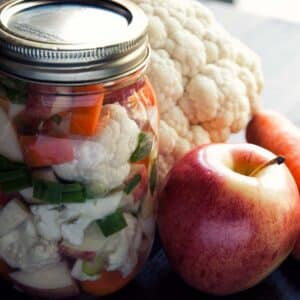
Lacto-Fermented Vegetable Medley
Equipment
- 1 Fermentation Jar
Ingredients
- 4 apples cored and diced
- 4 cups cauliflower florets
- 4 carrots peeled and diced
- 8 green onions thinly sliced
- 3 tablespoon fresh ginger grated
- 8 tablespoon sea salt
Instructions
- Combine the apples, cauliflower, carrots, onions and ginger together.4 apples, 4 cups cauliflower florets, 4 carrots, 8 green onions, 3 tablespoon fresh ginger
- Place the mixture little by little in your fermentation jar, pounding them vigorously and sprinkling some of the sea salt as you go along.8 tablespoon sea salt
- Make sure the mixture fills the jar up to 1 inch bellow the top (because of the expansion), adding more if needed, and that the extracted water covers the vegetables entirely. If not, create a brine of 2 tablespoons sea salt to 4 cups water and add it to the vegetables.
- Press the mixture and keep it under the brine by placing a plate or a lid on top weighted down by a rock or a jug of water. Cover with a clean towel if needed to keep out fruit flies.
- Place the fermentation jar in a warm spot in your kitchen and allow the mixture to ferment for 3 to 5 days.
- Check on it from time to time to be sure that the brine covers the mixture and to remove any mold that may form on the surface.
- A good way to know when it’s ready is to taste it during the fermentation process. It’s ready when you’re satisfied with the taste.


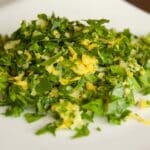
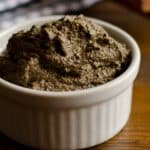
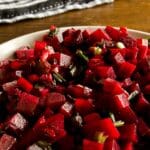
Leave a Reply